By Jonathan Little
TroyResearch
President
 An annual physical is a wise idea. Doc asks, “How are you doing?”. Then he or she asks some detailed questions based on your medical history. Then “how have you been feeling? Any issues?” Doc always orders blood draws to see what might be lurking. Is the statin drug keeping your cholesterol in check? Are you getting plenty of exercise, plenty of sleep? How’s your diet? Over the years, I’ve visited about my health with at least a dozen different doctors. I’m convinced that the good ones always ask good questions and then listen carefully. Good questioner – good listener. That’s the doc I can respect and put my trust in.
An annual physical is a wise idea. Doc asks, “How are you doing?”. Then he or she asks some detailed questions based on your medical history. Then “how have you been feeling? Any issues?” Doc always orders blood draws to see what might be lurking. Is the statin drug keeping your cholesterol in check? Are you getting plenty of exercise, plenty of sleep? How’s your diet? Over the years, I’ve visited about my health with at least a dozen different doctors. I’m convinced that the good ones always ask good questions and then listen carefully. Good questioner – good listener. That’s the doc I can respect and put my trust in.
If you operate a radio station, your station could benefit from an annual physical. You already know how it’s doing based on ratings, revenue, and profit. Your listeners know how you’re doing for them personally because they’re the users of your radio product. Is it pleasing, challenging, inspiring or annoying, irritating, and easily ignored with a click? If you ask them, they’ll tell you. You should ask them at least once a year.
TroyResearch has been in the business of asking listeners what they think for 27 years. We recently teamed up with Midwest Communications, Inc., in Green Bay to conduct an exploratory research project with their news/talk station WTAQ. TroyResearch’s association with MCI goes back nearly 27 years, doing music and perceptual research for the Duke Wright music stations. The WTAQ project was something new. Our goal was to discover what actionable data the opinions of loyal listeners might produce. TroyResearch worked with VP Programming Jeff McCarthy and Operations Manager Jason Hillery to develop a 25-question study.
Survey respondents were recruited over the air and were encouraged to go to the WTAQ website to take a brief survey. Clearly, we wanted to hear from P1’s, those listeners who produce 60%+ of reported listening. Their answers provided a clear picture of WTAQ loyalists – what they like, what they don’t like, their political affiliation, their listening behaviors (radio, podcasts, TV news, cable news, etc.), favorite news outlets, trustworthiness of news outlets, their thoughts about protests becoming riots, and their favorite podcasts to mention a few.
More than 200 respondents, Persons 18+, completed the WTAQ perceptual study. (32% 18-54, 68% 55+). With Jeff’s and Jason’s permission, we share some results.
Political Affiliation
1% Democrat
78% Republican
15% Independent
6% Other, like Libertarian, Socialist
In car listening
80% Local radio
10% Satellite radio
6% Streaming services like Spotify
3% Podcasts
1% Other like personal playlists
Listening to WTAQ, which simulcasts
76% FM
9% AM
8% Streaming from WTAQ app
6% Streaming from a smart device
1% Streaming from WTAQ.com
Where do you get your news? (Select all that apply)
93% Radio
46% Broadcast TV (local channels)
41% Cable news like Fox, CNN, MSNBC
29% Social Media like X, Facebook, Tiktok
16% Internet news like NY Post, Washington Post
10% Newspaper
12% Other
Your primary news source
58% Radio
15% Cable news like Fox, CNN, MSNBC
8% Broadcast TV (local channels)
7% Internet news like NY Post, Washington Post
7% Social Media like X, Facebook, Tiktok
3% Other
1% Newspaper
When does a protest/demonstration become a riot? (Select all that apply)
85%+ When protesters strike police, throw projectiles, set fires, do property damage
75% When protesters spit on police officers
60% When protesters burn the American flag
37% When protesters curse at police officers
Do you listen to podcasts?
23% Frequently
29% Occasionally
35% Rarely
13% Never
What podcast platform do you use? (Select all that apply)
32% YouTube
25% Spotify
19% iHeart
19% Apple
10% Amazon
2% Rumble
1% The Blaze
1% Daily Wire
As a broadcaster that reports news and information, WTAQ is interested in knowing how trustworthy you consider the reporting presented by these companies. (1 = very untrustworthy, 5 = very trustworthy)
4.43 WTAQ Radio, Green Bay
3.78 Fox News
3.59 Fox 11, Green Bay
2.92 WBAY, Channel 2, Green Bay
2.83 WFRV, Channel 5, Green Bay
2.77 WHBY Radio, Appleton
2.71 NBC 26, Green Bay
2.22 Green Bay Press Gazette
2.01 Wisconsin State Journal
1.99 Milwaukee Journal Sentinel
1.46 MSNBC
1.37 CNN
WTAQ asked the 0-10 Customer Endorsement Score question – “On a scale of 0-10 how likely would you be to recommend WTAQ to a friend or colleague?” Those scores reflect the listeners’ opinions of how the station is doing and it’s a forecast of WTAQ’s future. As a rule, a CES of 50 or higher indicates a healthy and sustainable product. WTAQ scored a strong 73 Customer Endorsement Score.
VP Jeff McCarthy and OM Jason Hillery are pleased with the results of this exploratory study. The WTAQ Sales Team is delighted with the data.
Good questioner … Good listener! WTAQ asked good questions. And now their leadership team is “listening” to the answers and determining what adjustments, if any, may result in improved ratings, revenue, and profit, on the way to an 80 Customer Endorsement Score with the next WTAQ study.
Jonathan Little is president of TroyResearch. He can be phoned at 608-219-1077 or emailed via: jlittle@troyresearch.net
Share this with your network
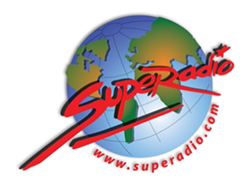 for the Amplified Voices Podcast Network and Amplified Voices TV. American Urban Radio Networks CEO Chesley Maddox-Dorsey says, “This launch represents a powerful evolution in our mission to serve Black audiences. By creating two distinct digital destinations under AmplifiedVoices.com — AVTV and AV Podcasts — we are sharpening our focus to better meet the needs of our listeners, viewers and content partners.” Content will include “On the Record” with AURN News correspondent Ebony McMorris, “Café Mocha Radio,” and “reACT with Rev. Al.”
for the Amplified Voices Podcast Network and Amplified Voices TV. American Urban Radio Networks CEO Chesley Maddox-Dorsey says, “This launch represents a powerful evolution in our mission to serve Black audiences. By creating two distinct digital destinations under AmplifiedVoices.com — AVTV and AV Podcasts — we are sharpening our focus to better meet the needs of our listeners, viewers and content partners.” Content will include “On the Record” with AURN News correspondent Ebony McMorris, “Café Mocha Radio,” and “reACT with Rev. Al.”


 the popularity of mobile devices for audio listening is the most dominant in urban communities. Within that audience segment, 40% of time is spent listening to audio on a mobile device, vs. 28% of time spent listening on an AM/FM radio receiver. The mobile device also holds a strong lead in suburban communities, with 36% of time spent listening on that device compared to 30% of time on a radio receiver. However, the radio receiver is strongest in rural communities where it matches the listening time of the mobile device, each receiving 34%.
the popularity of mobile devices for audio listening is the most dominant in urban communities. Within that audience segment, 40% of time is spent listening to audio on a mobile device, vs. 28% of time spent listening on an AM/FM radio receiver. The mobile device also holds a strong lead in suburban communities, with 36% of time spent listening on that device compared to 30% of time on a radio receiver. However, the radio receiver is strongest in rural communities where it matches the listening time of the mobile device, each receiving 34%.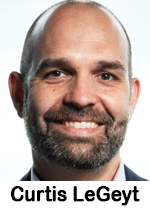 our airwaves free from government influence. The First Amendment affords our stations – and all Americans – this fundamental right, and the mere perception that broadcasters acted because of undue pressure is a problem for our credibility and the trust we have built with our audiences.
our airwaves free from government influence. The First Amendment affords our stations – and all Americans – this fundamental right, and the mere perception that broadcasters acted because of undue pressure is a problem for our credibility and the trust we have built with our audiences.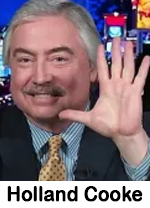 Don’t let Halloween sneak-up on you. The only holiday Americans spend more for is Christmas. So – to seem more in-touch than your robotic and/or non-local audio competitors – plan something spook-tacular.
Don’t let Halloween sneak-up on you. The only holiday Americans spend more for is Christmas. So – to seem more in-touch than your robotic and/or non-local audio competitors – plan something spook-tacular.
 that listening has grown across all demographics and time periods versus the Fall 2024 Nationwide report. Some key takeaways are: 1) Among persons 25-54, total U.S. AM/FM radio AQH has grown +6%, powered by a +19% increase in the Portable People Meter markets; 2) Weekends and nights have the greatest growth compared to Fall 2024; 3) Versus Fall 2024, Spring 2025 total U.S. audience growth is greater among men versus women and has increased in older demographics; and 4) Total U.S. Spring 2025 audience growth is up significantly among college graduates and upscale $75K+ income Americans. The blog post notes that the PPM audience growth is due to Nielsen’s three-minute qualifier modernization, which provides a significantly more comprehensive and realistic definition of AM/FM radio’s audience and their listening behavior. Nielsen found 23% of PPM listening occasions were three or four minutes. Under the old five-minute listening qualifier rule, none of this tuning would have received listening credit. Effective with the January 2025 PPM survey, Nielsen began crediting tuning occasions that are three minutes or greater.
that listening has grown across all demographics and time periods versus the Fall 2024 Nationwide report. Some key takeaways are: 1) Among persons 25-54, total U.S. AM/FM radio AQH has grown +6%, powered by a +19% increase in the Portable People Meter markets; 2) Weekends and nights have the greatest growth compared to Fall 2024; 3) Versus Fall 2024, Spring 2025 total U.S. audience growth is greater among men versus women and has increased in older demographics; and 4) Total U.S. Spring 2025 audience growth is up significantly among college graduates and upscale $75K+ income Americans. The blog post notes that the PPM audience growth is due to Nielsen’s three-minute qualifier modernization, which provides a significantly more comprehensive and realistic definition of AM/FM radio’s audience and their listening behavior. Nielsen found 23% of PPM listening occasions were three or four minutes. Under the old five-minute listening qualifier rule, none of this tuning would have received listening credit. Effective with the January 2025 PPM survey, Nielsen began crediting tuning occasions that are three minutes or greater. 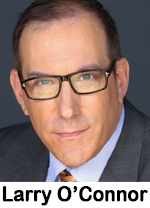 In the wake of Charlie Kirk’s murder, one would expect every company that owns a talk radio station, every network that syndicates conservative voices, and every corporation that employs talk radio hosts to issue a unified statement of defiance. This was not just an attack on Charlie; it was an attack on the entire industry of talk radio, on the free exchange of ideas, and on the First Amendment itself. Yet, shockingly, most of these companies have remained silent. That silence is unacceptable. At a moment like this, the industry should stand shoulder to shoulder and declare to the world: we will not be intimidated, we will not be silenced, and we will never abandon the microphone.
In the wake of Charlie Kirk’s murder, one would expect every company that owns a talk radio station, every network that syndicates conservative voices, and every corporation that employs talk radio hosts to issue a unified statement of defiance. This was not just an attack on Charlie; it was an attack on the entire industry of talk radio, on the free exchange of ideas, and on the First Amendment itself. Yet, shockingly, most of these companies have remained silent. That silence is unacceptable. At a moment like this, the industry should stand shoulder to shoulder and declare to the world: we will not be intimidated, we will not be silenced, and we will never abandon the microphone.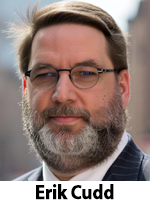 From my teenage years to today, radio has been the career of my adult life. When I first began listening in my teens, I was drawn less to the music and more to the conversation. I tuned into stations not for my favorite songs, but because I enjoyed hearing people talk, debate, and share ideas. Over my lifetime, I have seen many changes in the medium. The news/talk format, in particular, has always fascinated me for its mix of news, commentary, and immediacy.
From my teenage years to today, radio has been the career of my adult life. When I first began listening in my teens, I was drawn less to the music and more to the conversation. I tuned into stations not for my favorite songs, but because I enjoyed hearing people talk, debate, and share ideas. Over my lifetime, I have seen many changes in the medium. The news/talk format, in particular, has always fascinated me for its mix of news, commentary, and immediacy. FOX News Channel presenting a primetime special titled, “Charlie Kirk: An American Original,” hosted by FOX News Channel’s Jesse Watters tomorrow at 7:00 pm ET with an encore presentation on Sunday (9/14) at 7:00 pm ET. FOX News says Watters “will reflect on Kirk’s extraordinary impact as a conservative thought leader, gifted communicator, and a monumental force for the MAGA movement.” Kirk colleagues and friends being featured include: Donald Trump Jr., “My View” host Lara Trump, Graham Allen, and Pastor Jack Hibbs. In addition, FNC personalities Will Cain, Laura Ingraham, Brian Kilmeade, Ainsley Earhardt and Lawrence Jones will reflect on Kirk’s impact.
FOX News Channel presenting a primetime special titled, “Charlie Kirk: An American Original,” hosted by FOX News Channel’s Jesse Watters tomorrow at 7:00 pm ET with an encore presentation on Sunday (9/14) at 7:00 pm ET. FOX News says Watters “will reflect on Kirk’s extraordinary impact as a conservative thought leader, gifted communicator, and a monumental force for the MAGA movement.” Kirk colleagues and friends being featured include: Donald Trump Jr., “My View” host Lara Trump, Graham Allen, and Pastor Jack Hibbs. In addition, FNC personalities Will Cain, Laura Ingraham, Brian Kilmeade, Ainsley Earhardt and Lawrence Jones will reflect on Kirk’s impact.
 Salem Media Group recruits Australian media personality Erin Molan to host an eponymous podcast for the Salem Podcast Network. Molan says, “The American market has always felt like such a natural fit. The focus on my former show on Sky News Australia was always more heavily skewed towards foreign affairs, U.S. politics, national security, and COMMON SENSE! When clips started to go viral in the United States, I figured there was an appetite there for what I had to say!” Salem SVP spoken word Phil Boyce comments, “I really believe Erin Molan is the ‘thunder from down under.’ She is fighting hard for the right side in Australia, and now we are helping her make her case to the U.S. and beyond. She is a strong advocate for Israel and against anti-Semitic rhetoric, so I can’t wait to hear her get started.”
Salem Media Group recruits Australian media personality Erin Molan to host an eponymous podcast for the Salem Podcast Network. Molan says, “The American market has always felt like such a natural fit. The focus on my former show on Sky News Australia was always more heavily skewed towards foreign affairs, U.S. politics, national security, and COMMON SENSE! When clips started to go viral in the United States, I figured there was an appetite there for what I had to say!” Salem SVP spoken word Phil Boyce comments, “I really believe Erin Molan is the ‘thunder from down under.’ She is fighting hard for the right side in Australia, and now we are helping her make her case to the U.S. and beyond. She is a strong advocate for Israel and against anti-Semitic rhetoric, so I can’t wait to hear her get started.” radio spots across 192 media markets, generating more than 1 billion impressions and $43 million in airtime from TV and radio stations. NAB president and CEO Curtis LeGeyt says, “Local stations are serving communities with live sports, trusted local news and life-saving emergency coverage – all available for free to every American. But outdated rules are shackling these stations from growing and innovating at a time when Big Tech operates with limitless scale and zero public interest obligations. Consumers deserve more – not fewer – local journalists on the ground and live sporting events accessible without a subscription. The FCC must act quickly to level the playing field so broadcasters can continue investing in the content communities rely on most.”
radio spots across 192 media markets, generating more than 1 billion impressions and $43 million in airtime from TV and radio stations. NAB president and CEO Curtis LeGeyt says, “Local stations are serving communities with live sports, trusted local news and life-saving emergency coverage – all available for free to every American. But outdated rules are shackling these stations from growing and innovating at a time when Big Tech operates with limitless scale and zero public interest obligations. Consumers deserve more – not fewer – local journalists on the ground and live sporting events accessible without a subscription. The FCC must act quickly to level the playing field so broadcasters can continue investing in the content communities rely on most.” in the U.S. House of Representatives and a filibuster-proof 61 in the U.S. Senate. NAB president and CEO Curtis LeGeyt says, “We thank the growing, bipartisan group of lawmakers standing up for their constituents who depend on AM radio. This support demonstrates a deep understanding that AM radio remains an essential lifeline for emergency alerts, local news and community connection. With significant momentum behind this bill, NAB urges House leadership to bring it to the floor without delay and preserve this vital service for the American public.”
in the U.S. House of Representatives and a filibuster-proof 61 in the U.S. Senate. NAB president and CEO Curtis LeGeyt says, “We thank the growing, bipartisan group of lawmakers standing up for their constituents who depend on AM radio. This support demonstrates a deep understanding that AM radio remains an essential lifeline for emergency alerts, local news and community connection. With significant momentum behind this bill, NAB urges House leadership to bring it to the floor without delay and preserve this vital service for the American public.” An annual physical is a wise idea. Doc asks, “How are you doing?”. Then he or she asks some detailed questions based on your medical history. Then “how have you been feeling? Any issues?” Doc always orders blood draws to see what might be lurking. Is the statin drug keeping your cholesterol in check? Are you getting plenty of exercise, plenty of sleep? How’s your diet? Over the years, I’ve visited about my health with at least a dozen different doctors. I’m convinced that the good ones always ask good questions and then listen carefully. Good questioner – good listener. That’s the doc I can respect and put my trust in.
An annual physical is a wise idea. Doc asks, “How are you doing?”. Then he or she asks some detailed questions based on your medical history. Then “how have you been feeling? Any issues?” Doc always orders blood draws to see what might be lurking. Is the statin drug keeping your cholesterol in check? Are you getting plenty of exercise, plenty of sleep? How’s your diet? Over the years, I’ve visited about my health with at least a dozen different doctors. I’m convinced that the good ones always ask good questions and then listen carefully. Good questioner – good listener. That’s the doc I can respect and put my trust in. As TV touts its perennial New Fall Season, our DVR is already set to “record series” so we can pick-up where the “Matlock” sequel left-us-hanging; and for a third season of quirky “Elsbeth” (a closet reboot, the female “Columbo”). And where I live – where everyone seems to know everyone – we are salivating for “The Real Housewives of Rhode Island.”
As TV touts its perennial New Fall Season, our DVR is already set to “record series” so we can pick-up where the “Matlock” sequel left-us-hanging; and for a third season of quirky “Elsbeth” (a closet reboot, the female “Columbo”). And where I live – where everyone seems to know everyone – we are salivating for “The Real Housewives of Rhode Island.”
 The program is hosted by U.S. Senator Ted Cruz and Premiere Networks-syndicated radio personality and podcaster Ben Ferguson who break down the most important news stories of the week and what they mean for Americans. “Verdict with Ted Cruz was first launched as a podcast in January 2020. Premiere Networks expanded the podcast into a weekly one-hour radio program for talk radio stations, which debuted on 100 stations in April 2025.
The program is hosted by U.S. Senator Ted Cruz and Premiere Networks-syndicated radio personality and podcaster Ben Ferguson who break down the most important news stories of the week and what they mean for Americans. “Verdict with Ted Cruz was first launched as a podcast in January 2020. Premiere Networks expanded the podcast into a weekly one-hour radio program for talk radio stations, which debuted on 100 stations in April 2025.
 pursuit of pure profit. It embraced this Administration’s radical notion that discriminatory behavior should be tolerated and even embraced, while efforts to expand opportunity for everyone should be rejected.
pursuit of pure profit. It embraced this Administration’s radical notion that discriminatory behavior should be tolerated and even embraced, while efforts to expand opportunity for everyone should be rejected.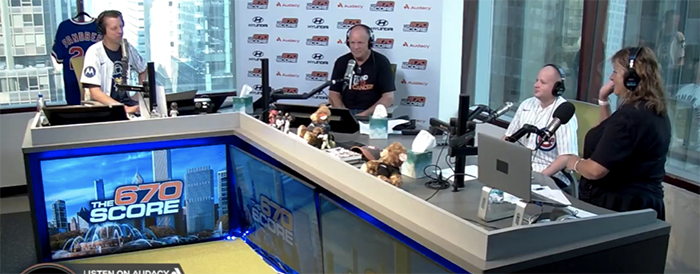
 the program “continues to build a powerful platform that champions American values, highlights critical national security issues, and gives voice to law enforcement, veterans, and grassroots advocates.” Letts adds, “I’m honored to bring our message to listeners in Los Angeles and Portland. Now more than ever, we need open, honest dialogue on the challenges facing our country – and we’re doing just that, one conversation at a time.”
the program “continues to build a powerful platform that champions American values, highlights critical national security issues, and gives voice to law enforcement, veterans, and grassroots advocates.” Letts adds, “I’m honored to bring our message to listeners in Los Angeles and Portland. Now more than ever, we need open, honest dialogue on the challenges facing our country – and we’re doing just that, one conversation at a time.”
 for free markets, Gomez called out the FCC’s role and Paramount for “cowardly capitulation.” Trusty said, “This transaction reflects the free market at work, where private investment, not government intervention, is preserving an iconic American media institution. During its review of the transaction, the Commission determined the merger was lawful and would serve the public interest. This deal brings fresh
for free markets, Gomez called out the FCC’s role and Paramount for “cowardly capitulation.” Trusty said, “This transaction reflects the free market at work, where private investment, not government intervention, is preserving an iconic American media institution. During its review of the transaction, the Commission determined the merger was lawful and would serve the public interest. This deal brings fresh  leadership, new capital, and a clear plan to compete with dominant tech platforms.” Gomez stated, “In an unprecedented move, this once-independent FCC used its vast power to pressure Paramount to broker a private legal settlement and further erode press freedom. Once again, this agency is undermining legitimate efforts to combat discrimination and expand opportunity by overstepping its authority and intervening in employment matters reserved for other government entities with proper jurisdiction on these issues. Even more alarming, it is now imposing never-before-seen controls over newsroom decisions and editorial judgment, in direct violation of the First Amendment and the law… The Paramount payout and this reckless approval have emboldened those who believe the government can – and should – abuse its power to extract financial and ideological concessions, demand favored treatment, and secure positive media coverage. It is a dark chapter in a long and growing record of abuse that threatens press freedom in this country.”
leadership, new capital, and a clear plan to compete with dominant tech platforms.” Gomez stated, “In an unprecedented move, this once-independent FCC used its vast power to pressure Paramount to broker a private legal settlement and further erode press freedom. Once again, this agency is undermining legitimate efforts to combat discrimination and expand opportunity by overstepping its authority and intervening in employment matters reserved for other government entities with proper jurisdiction on these issues. Even more alarming, it is now imposing never-before-seen controls over newsroom decisions and editorial judgment, in direct violation of the First Amendment and the law… The Paramount payout and this reckless approval have emboldened those who believe the government can – and should – abuse its power to extract financial and ideological concessions, demand favored treatment, and secure positive media coverage. It is a dark chapter in a long and growing record of abuse that threatens press freedom in this country.” Mark Walters
Mark Walters
 local communities and civic issues.” According to a press statement, Bolling will assist in guiding Re:Public’s strategic communications, serve as voice of the platform in national and regional media, and assist with outreach as Re:Public expands throughout the United States. Bolling says, “Re:Public is an innovative new platform that returns the voice of ordinary Americans to the center of our public life. Local news has been dominated by goliath corporations for too long. Re:Public empowers people with the ability to report what is important in their own neighborhoods — unfiltered, uncensored, and held accountable.”
local communities and civic issues.” According to a press statement, Bolling will assist in guiding Re:Public’s strategic communications, serve as voice of the platform in national and regional media, and assist with outreach as Re:Public expands throughout the United States. Bolling says, “Re:Public is an innovative new platform that returns the voice of ordinary Americans to the center of our public life. Local news has been dominated by goliath corporations for too long. Re:Public empowers people with the ability to report what is important in their own neighborhoods — unfiltered, uncensored, and held accountable.” the country, particularly in rural and underserved areas. However, Americans are increasingly skeptical of media institutions, with trust in media at historic lows. That reality cannot be ignored. It is not unreasonable for taxpayers to expect transparency, accountability, and balance from any outlet receiving federal support. Nor is it unreasonable for Congress to reassess whether public funding models established in a different media era remain justified today, especially when Americans have more access to more content from more sources than ever before. This action does not signal the end of public media. Instead, it presents an opportunity for innovation, partnerships, and more localized decision-making. As a regulator, I will continue to support policies that promote access and competition in media, without presupposing that one model of funding or content creation should be immune from public scrutiny or reform.”
the country, particularly in rural and underserved areas. However, Americans are increasingly skeptical of media institutions, with trust in media at historic lows. That reality cannot be ignored. It is not unreasonable for taxpayers to expect transparency, accountability, and balance from any outlet receiving federal support. Nor is it unreasonable for Congress to reassess whether public funding models established in a different media era remain justified today, especially when Americans have more access to more content from more sources than ever before. This action does not signal the end of public media. Instead, it presents an opportunity for innovation, partnerships, and more localized decision-making. As a regulator, I will continue to support policies that promote access and competition in media, without presupposing that one model of funding or content creation should be immune from public scrutiny or reform.” to elevating Black culture and storytelling across podcast and video platforms” that will serve as the exclusive home for both the Amplified Voices Podcast Network and the soon-to-launch Amplified Voices TV. Superadio and AURN CEO Chesley Maddox-Dorsey says, “This launch represents a powerful evolution in our mission to serve Black audiences. By creating three distinct digital destinations – AURN.com, Superadio.com and AmplifiedVoices.com – we are sharpening our focus to better meet the needs of our listeners, viewers and content distributors.”
to elevating Black culture and storytelling across podcast and video platforms” that will serve as the exclusive home for both the Amplified Voices Podcast Network and the soon-to-launch Amplified Voices TV. Superadio and AURN CEO Chesley Maddox-Dorsey says, “This launch represents a powerful evolution in our mission to serve Black audiences. By creating three distinct digital destinations – AURN.com, Superadio.com and AmplifiedVoices.com – we are sharpening our focus to better meet the needs of our listeners, viewers and content distributors.”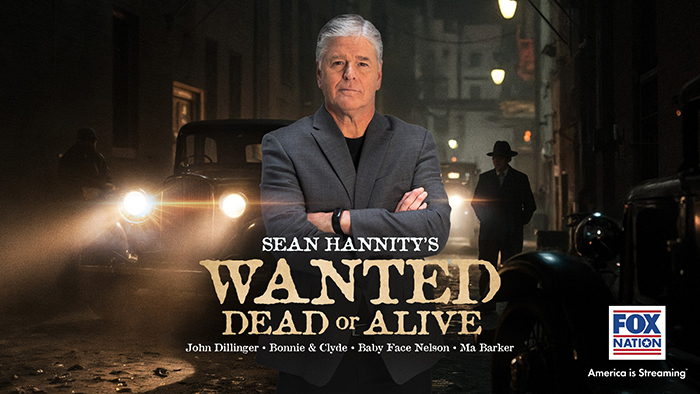
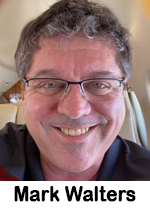 and the “AAR Daily Defense Hour” join the programming at Omni Broacasting’s WTKE in the Ft. Walton Beach-Destin, Florida market. Additionally, the “Armed American Radio” show is being distributed by CRN Talk to cable systems operated by Cox Communications, Optimum TV, and Xfinity Stream.
and the “AAR Daily Defense Hour” join the programming at Omni Broacasting’s WTKE in the Ft. Walton Beach-Destin, Florida market. Additionally, the “Armed American Radio” show is being distributed by CRN Talk to cable systems operated by Cox Communications, Optimum TV, and Xfinity Stream. and companies seeking to hire, especially among passive job seekers who are less likely to use job sites: Nine out of 10 job seekers are reached by ad-supported audio. Over-the-air AM/FM radio reaches nearly 80% of active and passive job seekers. Six out of 10 active job seekers are reached by podcasts; 2) AM/FM radio streaming’s audience growth has surged among job seekers: Since 2021, AM/FM radio streaming has soared in usage among both active and passive job seekers. Six out 10 active job seekers are reached by AM/FM radio streaming; 3) Passive job seekers outnumber active job seekers by +50%. Active job seekers are growing: The optimal source for filling positions are passive job seekers who outnumber active job seekers by +50%. Active job seekers have surged from 15% in 2018 to 24% currently; and 4) Advertising works: There is a very linear relationship between ad spend, share of voice, ad recall, and market share. The greater the ad spend, the greater the ad recall and market share.
and companies seeking to hire, especially among passive job seekers who are less likely to use job sites: Nine out of 10 job seekers are reached by ad-supported audio. Over-the-air AM/FM radio reaches nearly 80% of active and passive job seekers. Six out of 10 active job seekers are reached by podcasts; 2) AM/FM radio streaming’s audience growth has surged among job seekers: Since 2021, AM/FM radio streaming has soared in usage among both active and passive job seekers. Six out 10 active job seekers are reached by AM/FM radio streaming; 3) Passive job seekers outnumber active job seekers by +50%. Active job seekers are growing: The optimal source for filling positions are passive job seekers who outnumber active job seekers by +50%. Active job seekers have surged from 15% in 2018 to 24% currently; and 4) Advertising works: There is a very linear relationship between ad spend, share of voice, ad recall, and market share. The greater the ad spend, the greater the ad recall and market share.